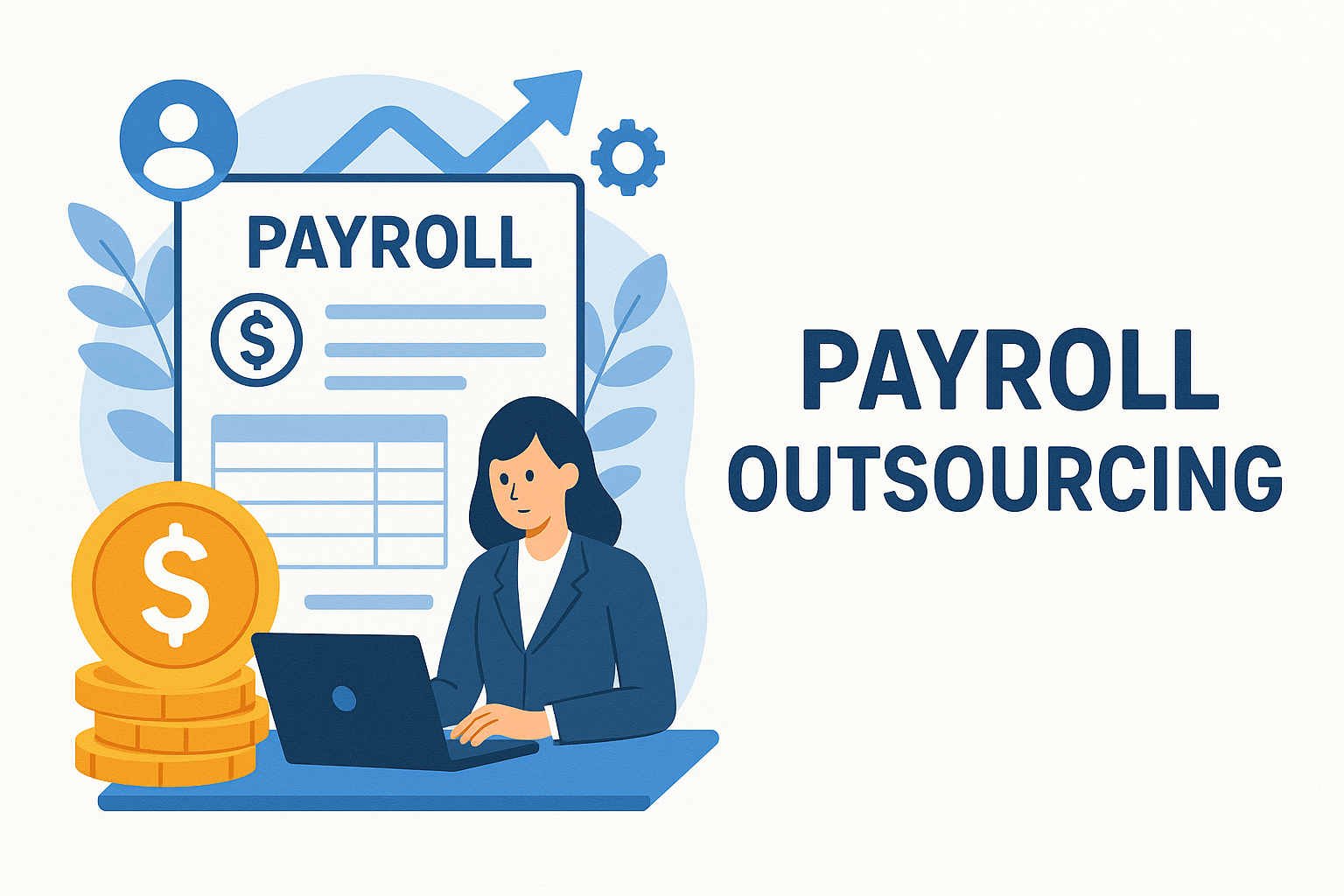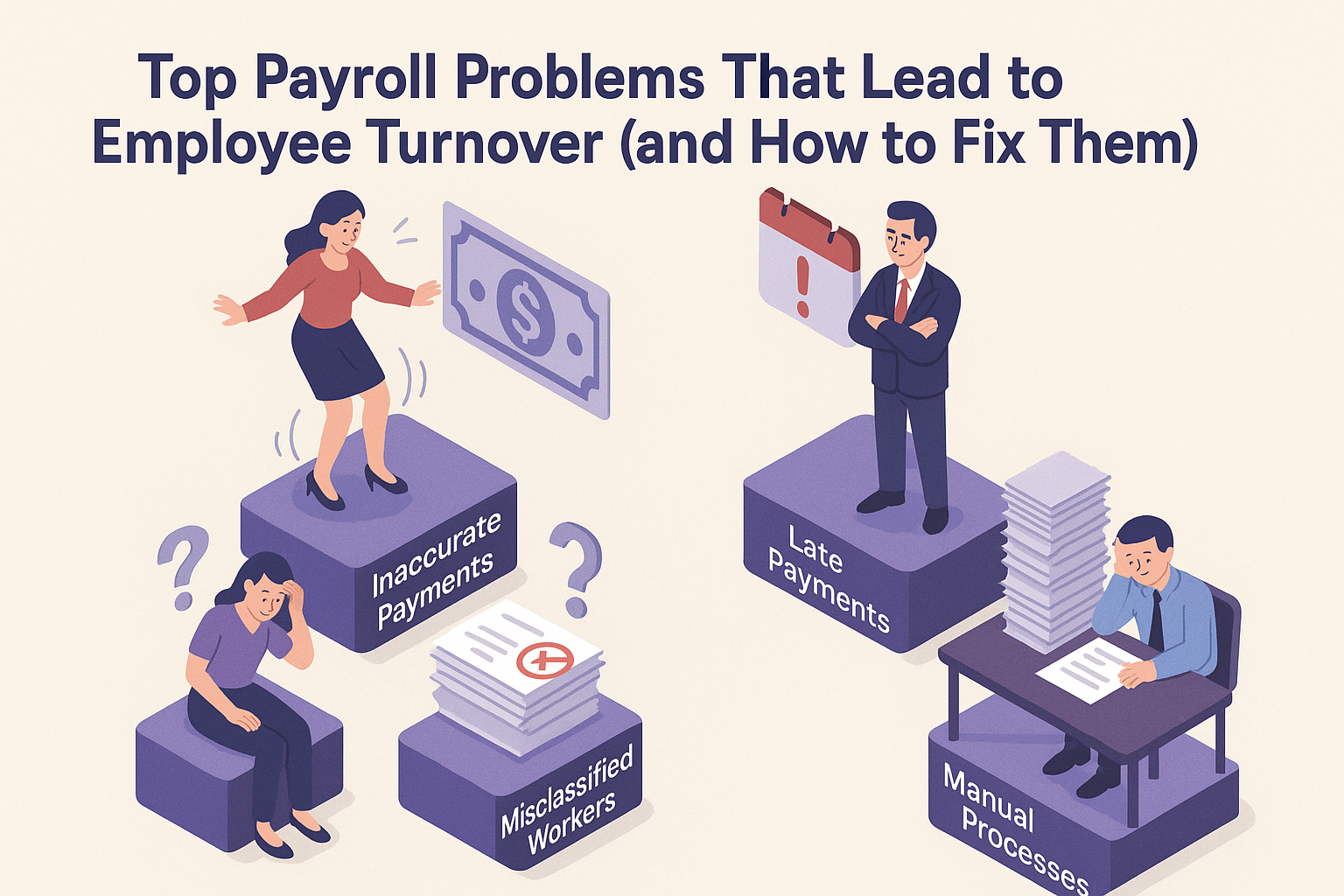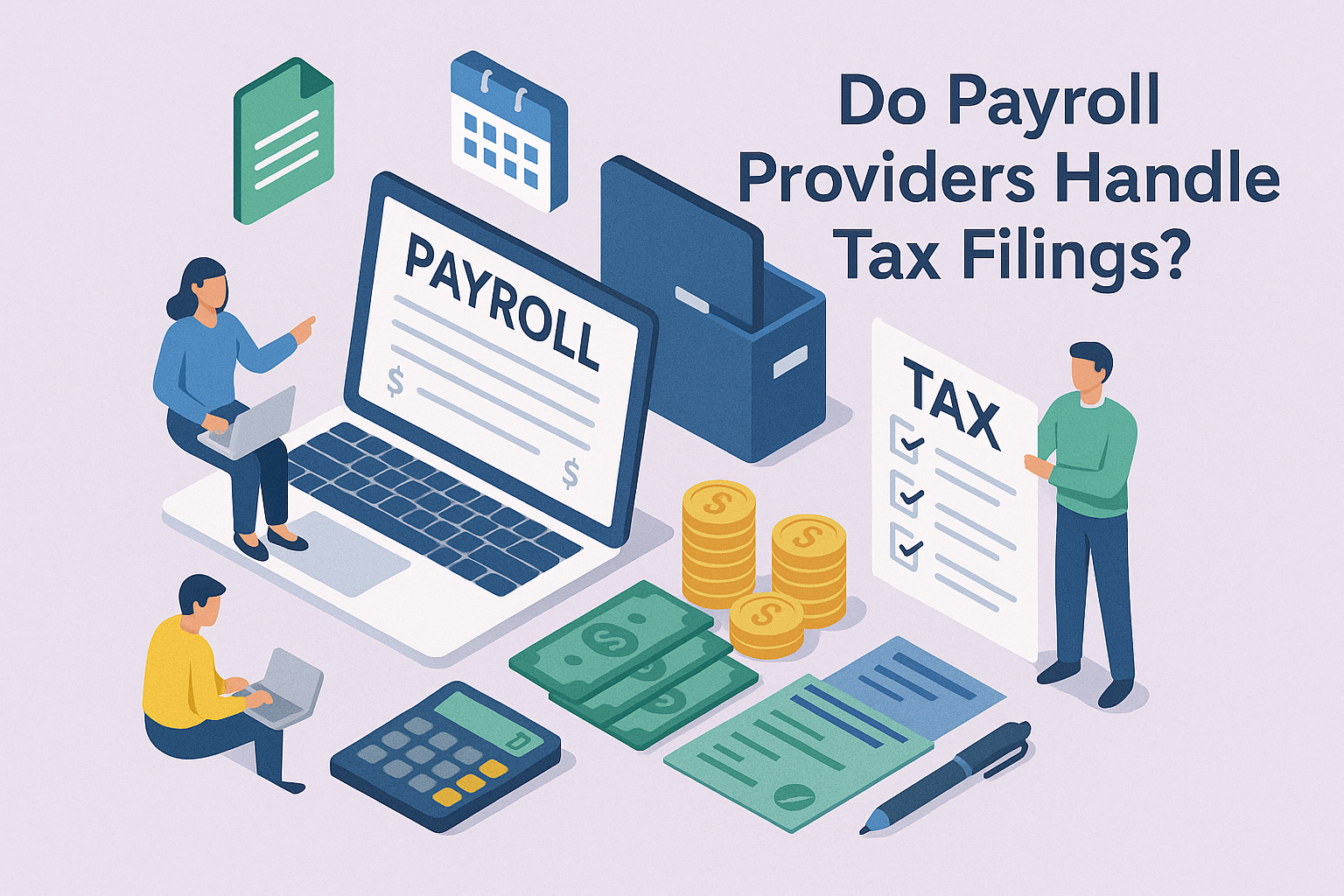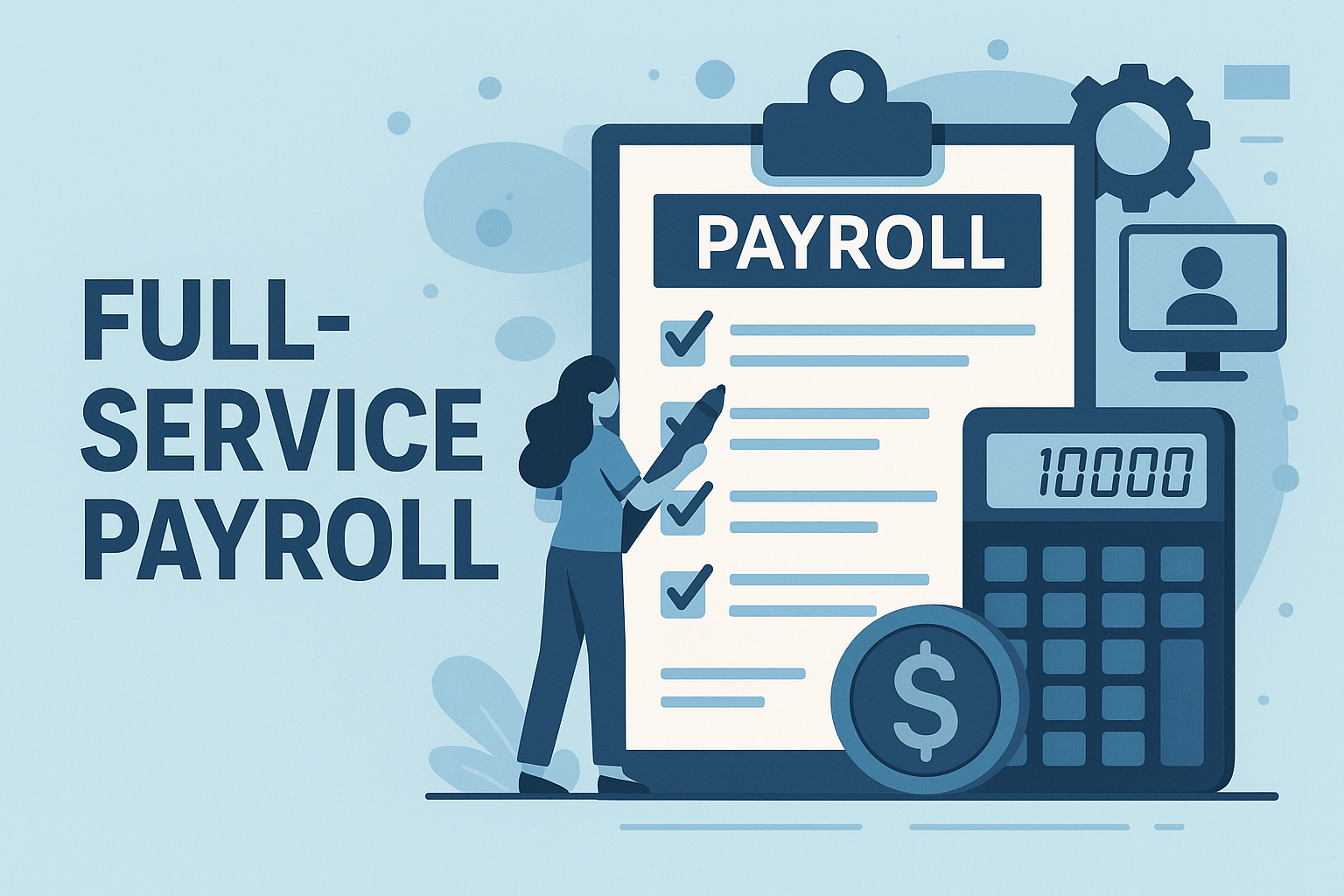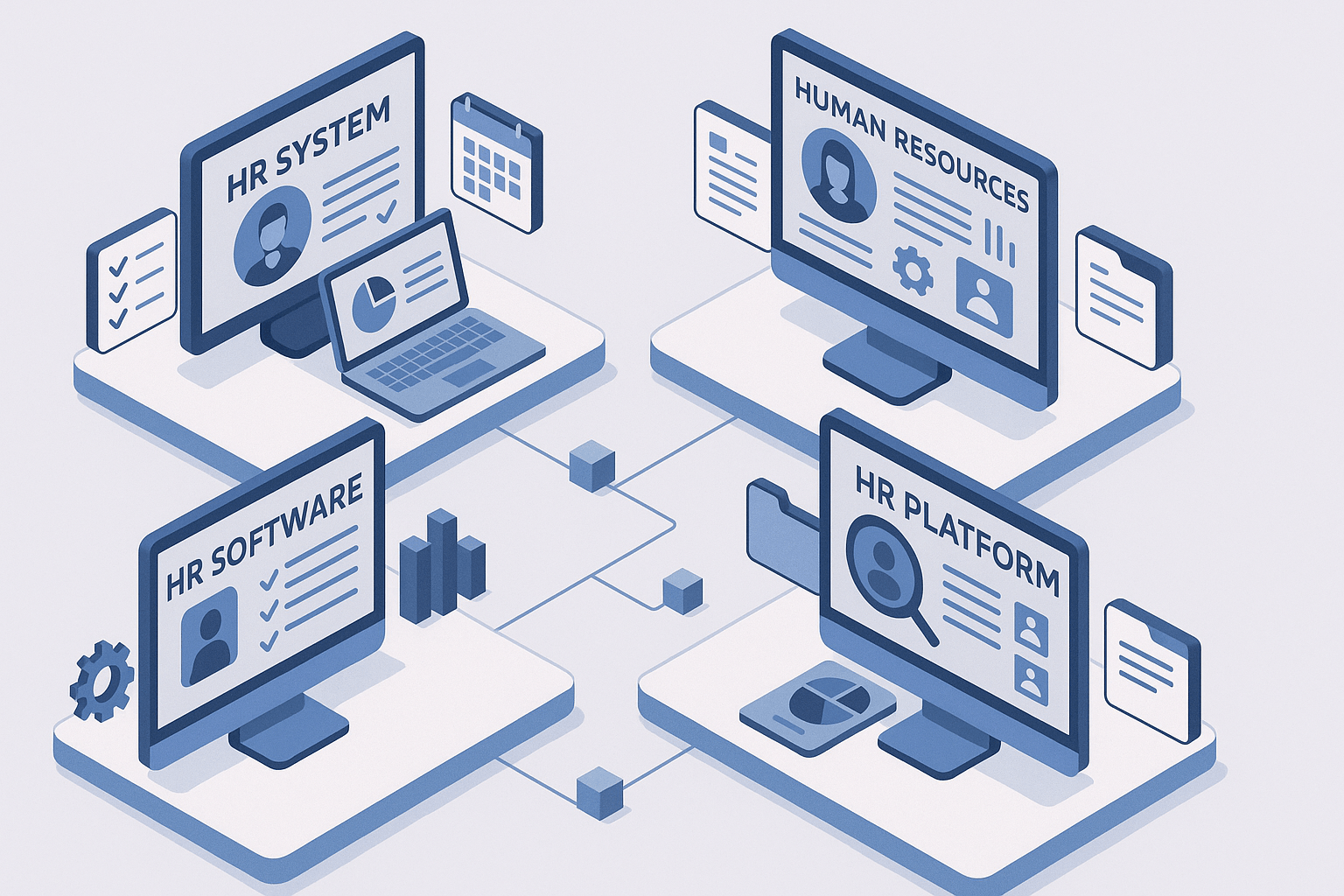A Complete Guide to Simplifying Payroll Processing for Employers
July 24th, 2025
12 min read
Many business owners find payroll to be a source of stress, filled with compliance worries, potential errors, and time-consuming tasks. It's a critical business function, and mistakes can lead to financial penalties, legal issues, and employee dissatisfaction.
At Lift HCM, we've helped hundreds of businesses streamline their payroll processes, transforming them from chaotic to compliant and efficient.
In this article, you’ll learn what payroll processing is, how it works, and how to make it easier and more accurate for your business, saving you time and reducing stress.
Table of Contents
- What Exactly Is Payroll Processing?
- How Does Payroll Processing Work? A Step-by-Step Breakdown
- What Essential Information Is Needed to Process Payroll?
- Who Is Responsible for Payroll Processing in a Business?
- What Are the Legal and Tax Requirements for Payroll?
- What's the Difference Between Payroll Processing and Payroll Management?
- How Long Does Payroll Processing Take?
- Simplifying Payroll with Expert Support
What Exactly Is Payroll Processing?
So, what is payroll processing? It's the systematic series of steps a business takes to calculate, distribute, and account for employee wages. This includes gathering employee information, tracking hours, calculating gross pay, applying deductions (like taxes and benefits), and issuing net payments.
The primary purpose of payroll processing is to ensure accurate, timely employee payments and strict tax compliance. You might also hear it called a "payroll run" or "payroll cycle." For small business owners, understanding this process is especially critical, as errors can directly impact cash flow or trigger fines. It’s about creating a consistent, repeatable process that protects both the employer and employees.
How Does Payroll Processing Work? A Step-by-Step Breakdown
Wondering how payroll processing works? It involves several key steps:
1. How Do You Collect Employee Data for Payroll?
This initial step is absolutely crucial and forms the foundation of accurate payroll. It involves gathering all necessary information for each employee during every pay period. This includes:
- Hours Worked: For hourly employees, precise time tracking (e.g., via time clocks, software, or timesheets) is paramount. For salaried employees, this might simply confirm full-time status or account for any approved leave.
- Salaries, Wages, Commissions, Bonuses: Verifying the correct base pay, any variable compensation, or one-time payouts.
- Paid Time Off (PTO): Tracking accrued and used vacation, sick leave, or holiday pay to ensure correct application.
- New Hire Information: For new employees, this means collecting comprehensive onboarding documents like W-4s (for federal tax withholding), state tax forms, I-9s (for employment eligibility verification), direct deposit authorizations, and benefit enrollment forms.
Errors at this data collection stage—whether due to manual entry mistakes, miscommunication, or outdated information—can lead to cascading problems throughout the entire payroll process, resulting in incorrect paychecks and compliance issues. Implementing robust, often automated, timekeeping and HR data management systems can significantly mitigate these risks.
2. How Do You Calculate Gross Pay?
Once all relevant data is collected, the next step is to calculate gross pay. This is the total amount an employee earns before any deductions are taken out.
- For hourly employees: This involves multiplying their verified hours worked by their hourly rate. Overtime hours (typically hours exceeding 40 in a workweek) must be calculated at the appropriate rate (e.g., 1.5 times the regular rate, as per FLSA).
- For salaried employees: This is generally their fixed salary for the pay period, adjusted for any unpaid leave or special circumstances.
- Additional Compensation: This stage also includes factoring in any bonuses, commissions, tips, shift differentials, holiday pay, or retroactive pay adjustments, all of which contribute to the employee's gross earnings.
Accuracy here is non-negotiable, as gross pay directly impacts all subsequent deductions and tax calculations.
3. What Deductions Are Applied to Employee Pay?
After gross pay is determined, the next complex layer involves applying payroll deductions. These fall into two main categories:
- Mandatory Deductions:
-
- Federal Income Tax: Withheld based on the employee's W-4 form.
- State Income Tax: Varies by state; not all states have income tax.
- Local Income Tax: Applicable in some cities, counties, or municipalities.
- FICA Taxes (Federal Insurance Contributions Act): Includes Social Security (employer and employee share) and Medicare taxes.
- Other State-Specific Taxes: Such as State Unemployment Tax Act (SUTA), State Disability Insurance (SDI), or Paid Family Leave contributions.
- Wage Garnishments: Court-ordered deductions for child support, student loans, or other debts.
- Voluntary Deductions:
-
- Health insurance premiums (employee share).
- Retirement plan contributions (e.g., 401(k), 403(b)).
- Flexible Spending Accounts (FSAs) or Health Savings Accounts (HSAs).
- Life insurance premiums, disability insurance.
- Union dues or charitable contributions.
Each deduction must be calculated correctly according to specific percentages, limits, and employee elections. Miscalculations here are a frequent source of errors and compliance issues.
4. How Is Net Pay Issued to Employees?
Once all mandatory and voluntary deductions are applied, the resulting amount is the employee's net pay (also known as take-home pay). This is the amount that is actually issued to employees.
- Direct Deposit: The most common and efficient method, where funds are electronically transferred directly into the employee's bank account. This requires accurate bank account and routing numbers.
- Printed Checks: Less common now but still used, requiring secure printing and distribution.
- Pay Cards: Pre-paid debit cards loaded with net pay, an option for employees without traditional bank accounts.
Employers must ensure payments are delivered accurately and on schedule, adhering to pay frequency agreements (e.g., weekly, bi-weekly, semi-monthly, monthly). Consistency in payment delivery is crucial for employee financial planning and satisfaction.
5. How Do Businesses File and Pay Payroll Taxes?
A critical, ongoing part of payroll compliance is filing and paying payroll taxes to various government agencies. This isn't a one-time event; it involves regular deposits and periodic reporting.
- Depositing Withheld Taxes: Employers must remit the federal income tax, Social Security, and Medicare taxes withheld from employee wages, along with the employer's share of FICA and FUTA (Federal Unemployment Tax Act) taxes, to the IRS. These deposits are often made electronically (EFTPS) and can be daily, weekly, or monthly, depending on the total tax liability.
- Filing Federal Forms:
-
- Form 941 (Employer's Quarterly Federal Tax Return): Reports income tax, Social Security, and Medicare taxes withheld from employee wages, along with the employer's share of Social Security and Medicare taxes.
- Form 940 (Employer's Annual Federal Unemployment (FUTA) Tax Return): Reports annual FUTA tax.
- W-2 Forms (Wage and Tax Statement): Issued to employees annually, reporting their wages and taxes withheld for the year.
- Filing State and Local Forms: Similar to federal, businesses must report and remit state income taxes, state unemployment taxes, and any applicable local taxes to the relevant agencies. Deadlines and forms vary significantly by jurisdiction.
Missing tax deadlines or making inaccurate deposits can result in substantial penalties, interest, and even legal action from the IRS or state tax authorities.
6. Why Is Maintaining Payroll Records Important?
Finally, maintaining accurate payroll records is not merely good practice—it's a legal requirement. Employers must keep all payroll data organized and accessible for potential audits, year-end reporting, and compliance checks.
- Required Documentation: Records should include timesheets, pay stubs, tax filings (like Form 941s, 940s, W-2s), direct deposit confirmations, employee contracts, W-4s, I-9s, and documentation for any deductions or benefits.
- Retention Periods: Federal and state laws dictate minimum retention periods, which can range from three to seven years, depending on the type of record.
Diligent record-keeping ensures transparency, facilitates smooth audits, and provides a clear historical account of all compensation and tax activities, protecting your business from potential disputes or legal challenges. The entire payroll process is not a one-size-fits-all system; it must adapt to the structure and size of your workforce, changes in employment law, and the unique needs of your business.
What Essential Information Is Needed to Process Payroll?
To run payroll smoothly and accurately, a comprehensive set of details for every employee is absolutely vital. So, what information is needed to process payroll effectively? Gathering and meticulously maintaining this data is the cornerstone of avoiding errors and ensuring compliance.
Here's a breakdown of the essential information:
- Full Legal Name and Social Security Number (SSN): Crucial for tax reporting (W-2s) and identification purposes with government agencies.
- Tax Withholding Elections (W-4 form): This federal form, completed by the employee, dictates how much federal income tax should be withheld from their paychecks based on their marital status, dependents, and other adjustments. Similar state forms may also be required.
- Employee Classification: This is a critical distinction that impacts tax obligations and labor law compliance:
-
- Full-time vs. Part-time: Affects benefit eligibility and sometimes overtime calculations.
- Exempt vs. Non-exempt: Determines eligibility for overtime pay under the FLSA. Misclassification here is a common and costly mistake.
- W-2 Employee vs. 1099 Contractor: This is a fundamental legal distinction with massive implications for tax withholding, benefits, and labor law compliance. Misclassifying an employee as an independent contractor can lead to significant penalties.
- Pay Rate or Salary: The agreed-upon hourly wage, weekly/bi-weekly/monthly salary, commission structure, or bonus arrangements.
- Direct Deposit Information: Bank name, account number, and routing number for electronic fund transfers. Accuracy here prevents payments from being sent to the wrong account.
- Benefit Elections and Other Deductions: Details of any health insurance plans, retirement accounts (401(k), IRA), flexible spending accounts (FSAs), health savings accounts (HSAs), or other voluntary deductions the employee has authorized.
- Work Location: Especially critical for multi-state employers, as state and local tax laws, unemployment contributions, and labor regulations can vary dramatically by jurisdiction.
- Date of Hire and Employment Status: Essential for tracking tenure, benefit eligibility, and for accurate termination payrolls.
- Emergency Contact Information: While not directly for payroll calculation, it's vital for comprehensive employee records.
Keeping this data accurate and updated is paramount to running payroll smoothly and avoiding complications with tax filings and employee pay. Employers should implement regular audits of employee files to ensure information is current, compliant, and correctly entered into the payroll system. Even seemingly minor outdated information—like a wrong address or misfiled form—can cause significant complications.
Who Is Responsible for Payroll Processing in a Business?
When it comes to who is responsible for payroll processing, the answer isn't uniform. It can vary significantly depending on the size, structure, and internal capabilities of your organization. Understanding these different models is key to choosing the right approach for your business.
Here are the common individuals or teams responsible:
- Internal HR or Accounting Staff:
-
- Typically for: Small to medium-sized businesses with dedicated internal departments. A bookkeeper, HR manager, or a small accounting team handles the day-to-day operations.
- Responsibilities: This usually includes collecting time data, calculating wages and deductions, generating paychecks, making tax deposits, and filing necessary forms. They also handle employee payroll inquiries.
- Challenges: Requires internal expertise in ever-changing tax laws and labor regulations. Can be time-consuming and prone to error without proper software and training.
- An Outsourced Payroll Provider:
-
- Typically for: Businesses of all sizes, especially those looking to reduce administrative burden and ensure specialized expertise.
- Responsibilities: These third-party companies specialize exclusively in payroll. They handle calculations, tax deposits, year-end tax form generation (W-2s, 1099s), and often provide direct deposit services and online employee portals.
- Benefits: Reduces the risk of manual errors, provides expert support for compliance and tax law changes, and frees up internal staff to focus on core business activities. Examples include services like ADP, Paychex, or more specialized providers.
- A Professional Employer Organization (PEO):
-
- Typically for: Growing companies that want integrated HR, benefits administration, and payroll support. In a PEO arrangement, you co-employ your staff, and the PEO takes on significant employer responsibilities.
- Responsibilities: A PEO handles all aspects of payroll, including tax filings, as well as providing access to robust benefits packages (health insurance, 401(k)), workers' compensation, and HR compliance support.
- Benefits: Offers a comprehensive solution, simplifying complex HR functions under one roof and often providing better access to benefits and compliance expertise.
- The Business Owner or Office Manager:
-
- Typically for: Very small businesses or startups with limited employees and resources.
- Responsibilities: In these scenarios, the owner or an office manager often handles all payroll tasks manually, using basic software, or even spreadsheets. They wear multiple hats, including payroll, HR, and general administration.
- Challenges: Extremely time-consuming, high risk of error, and often requires the owner to constantly stay updated on complex and changing regulations, diverting focus from strategic growth initiatives.
Regardless of who is physically processing the payroll, establishing clear ownership over the payroll process is paramount. Defined roles prevent duplication of effort, reduce errors, and ensure consistent, secure handling of sensitive financial and employee data. Moreover, when employees know who to approach with payroll questions or concerns, it builds trust and helps resolve issues quickly and accurately, fostering a more positive work environment.
What Are the Legal and Tax Requirements for Payroll?
What are the legal and tax requirements for payroll? This is arguably the most critical and complex area of payroll processing, as businesses must navigate a vast, dynamic web of federal, state, and even local rules. Failing to adhere to these regulations can result in severe financial penalties, audits, lawsuits, and significant reputational damage. Understanding these is essential for protecting your business:
- Fair Labor Standards Act (FLSA): This federal law is foundational. It dictates:
-
- Minimum Wage: The federal minimum wage, which states and cities can exceed.
- Overtime Pay: Requires non-exempt employees to be paid 1.5 times their regular rate for hours worked over 40 in a workweek.
- Recordkeeping: Mandates specific types of records to be kept for wages, hours, and other employment conditions.
- Child Labor: Sets restrictions on the employment of minors.
- Employee Classification (Exempt vs. Non-exempt): Crucially defines which employees are exempt from overtime and minimum wage requirements, based on salary level, job duties, and salary basis. Misclassification here is one of the most common and costly payroll mistakes, leading to significant back pay liabilities.
- IRS Regulations (Internal Revenue Service): The IRS governs federal employment taxes. Key aspects include:
-
- Income Tax Withholding: Employers must withhold federal income tax from employee wages based on W-4 forms.
- FICA Taxes (Social Security and Medicare): Both employers and employees contribute to these taxes. Employers must withhold the employee's share and pay their own matching share.
- FUTA Taxes (Federal Unemployment Tax Act): Employers pay this tax, which funds unemployment benefits.
- Timely Deposits: Strict rules govern how quickly withheld taxes and employer contributions must be deposited with the IRS (e.g., daily, weekly, or monthly, depending on tax liability).
- Reporting: Requires quarterly (Form 941), annual (Form 940), and year-end (W-2s, 1099s for contractors) reporting.
- State-Specific Labor Laws: These vary dramatically by location and add another layer of complexity. They can include:
-
- State minimum wage laws (often higher than federal).
- State unemployment insurance (SUI) taxes, which vary by employer experience rating.
- State disability insurance (SDI) or paid family leave contributions.
- Specific wage payment rules (e.g., final paycheck deadlines, pay frequency).
- Mandatory paid sick leave laws.
- Local income or employment taxes in certain cities or counties.
- ACA and Benefits Compliance (Affordable Care Act): For Applicable Large Employers (ALEs), the ACA imposes requirements related to offering affordable health coverage and annual reporting (Forms 1094-C and 1095-C). Even for smaller businesses, accurately deducting benefit premiums and managing eligibility are crucial.
- Wage Garnishments and Child Support Orders: Employers are legally required to comply with court orders to withhold specific amounts from an employee's pay for child support, alimony, or other debts. Strict rules dictate calculation and remittance.
Noncompliance with payroll laws can lead to severe financial penalties, audits, and employee lawsuits. Staying current with changing regulations is essential for protecting your business and reputation. The most reliable approach is to work with an experienced payroll expert or provider who can help you navigate these complex requirements and keep your company compliant.
What's the Difference Between Payroll Processing and Payroll Management?
Many employers ask, "what's the difference between payroll processing and payroll management?" While often used interchangeably, there's a crucial distinction between these two concepts. Understanding this difference helps businesses recognize the strategic importance of payroll beyond just cutting checks.
|
Aspect |
Payroll Processing |
Payroll Management |
|
Focus |
Primarily on the operational tasks of calculating and paying wages, and remitting taxes. |
Broad oversight of the entire payroll strategy, systems, and compliance. |
|
Scope |
Narrow – focuses on the transactional aspects of each payroll run. |
Broader – includes planning, budgeting, analytics, and ensuring long-term compliance. |
|
Activities |
Data collection, calculation of gross and net pay, applying deductions, issuing payments, basic tax filings. |
Selecting payroll systems, developing payroll policies, ensuring regulatory compliance, managing audit readiness, optimizing payroll costs, integrating with HR and finance, strategic workforce planning. |
|
Objective |
To ensure employees are paid accurately and on time, and taxes are handled correctly for each pay period. |
To maximize payroll efficiency, minimize risk, support business objectives, and leverage payroll data for strategic decision-making. |
|
Tools |
Primarily relies on payroll software or internal systems for calculations and payments. |
Utilizes advanced analytics, compliance alerts, audit tools, and integrates with broader HRIS (Human Resources Information Systems) and financial planning tools. |
In essence, payroll processing is the execution of specific tasks within the larger framework of payroll management. Think of processing as the tactical, day-to-day work—the actual "doing" of payroll. It's about ensuring that employees are paid, and the necessary taxes are handled correctly for a specific pay period.
How Long Does Payroll Processing Take?
Employers frequently ask, "how long does payroll processing take?" The answer isn't a simple number, as the duration can vary significantly based on several key factors related to your business's size, complexity, and the systems you use.
For a very small business (e.g., 1-5 employees) with manual processes or basic spreadsheet-based calculations, processing payroll might initially take anywhere from a few hours to a full day each pay period. This involves gathering timesheets, manually calculating gross pay, deductions, and taxes, then preparing checks or setting up direct deposits, and finally, recording everything.
Larger organizations, or companies with more complex structures (e.g., multiple locations, varied pay rates, commissions, numerous benefits, multi-state employees), may require even more dedicated time—potentially days—for each pay cycle if relying on less efficient systems.
Factors that significantly impact payroll processing timing:
- Number of Employees: More employees mean more data to collect, calculate, and verify.
- Frequency of Pay: Weekly payrolls require more frequent processing (52 times a year) compared to monthly (12 times a year), demanding more recurring time commitment.
- Manual vs. Automated Systems: Manual calculations are inherently slower and more error-prone than automated software.
- Complexity of Pay Structures: Businesses with diverse pay rates, shift differentials, commissions, bonuses, or intricate overtime rules will require more calculation time than those with simple hourly or salaried structures.
- Benefits and Deductions: The more types of benefits offered and deductions taken, the more complex the calculations become.
- Multi-State or International Employees: Navigating different state and local tax laws, unemployment rates, and labor regulations adds considerable complexity and time.
- Integration with Time-Tracking and Benefits Platforms: A truly efficient payroll system integrates seamlessly with time-tracking software and benefits administration platforms, automating data flow and eliminating manual entry. Without this, time is spent manually transferring data.
- Changes in Workforce: Frequent new hires, terminations, raises, or changes in employee benefits add time to each pay period for updates and final calculations.
Automated payroll software or outsourcing to a dedicated provider significantly reduces the time commitment. Businesses that strategically invest in efficient payroll tools or services often find they recover dozens of hours each month. This reclaimed time can then be reinvested in strategic HR, financial planning, or core business development efforts, ultimately providing a significant return on investment beyond just payroll itself. While the upfront setup may take time, the ongoing efficiency gains are substantial.
Simplifying Payroll with Expert Support
Payroll processing doesn't have to be a source of stress or complexity for your business. While it involves intricate details and ever-evolving regulations, the insights and strategies we've discussed prove that accurate, compliant payroll is entirely achievable. By understanding the core steps, proactively avoiding common pitfalls, and leveraging the right technology, you can transform payroll from a burden into a smooth, efficient operation that strengthens your business.
For employers, choosing the right payroll system or partner isn't just about administrative convenience; it's about mitigating risk, reclaiming valuable time, and ensuring your most valuable asset—your people—are paid correctly and on time, every time. This fosters trust, boosts morale, and allows you to focus on what you do best: driving your business forward.
At Lift HCM, we understand these challenges intimately. That's why we offer compliant, efficient, and personalized payroll processing solutions tailored specifically to your unique needs. We're here to take the complexity out of payroll, providing the accuracy and peace of mind you deserve.
Ready to streamline your payroll, save time, and ensure complete compliance? Explore our comprehensive payroll services and discover how Lift HCM can simplify your payroll today!
Caitlin Kapolas is a results-driven professional with a strong background in account management and retail. She is dedicated to improving client experiences and building lasting relationships. Caitlin excels in identifying client needs, resolving issues, and implementing customized solutions that drive value. Her effective communication skills ensure high client satisfaction and loyalty, making her a trusted advisor and partner in meeting client needs with precision and professionalism.
















